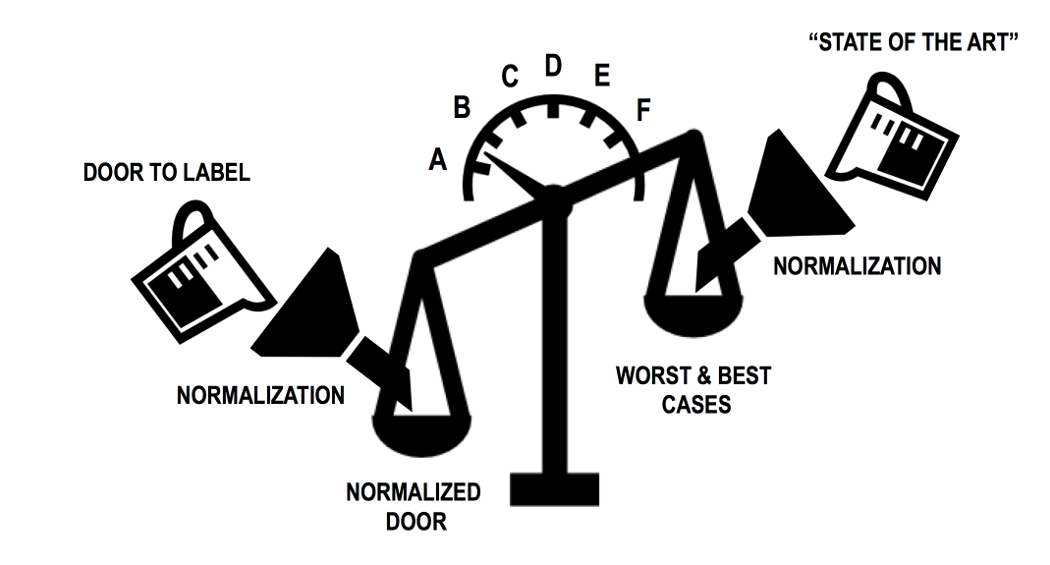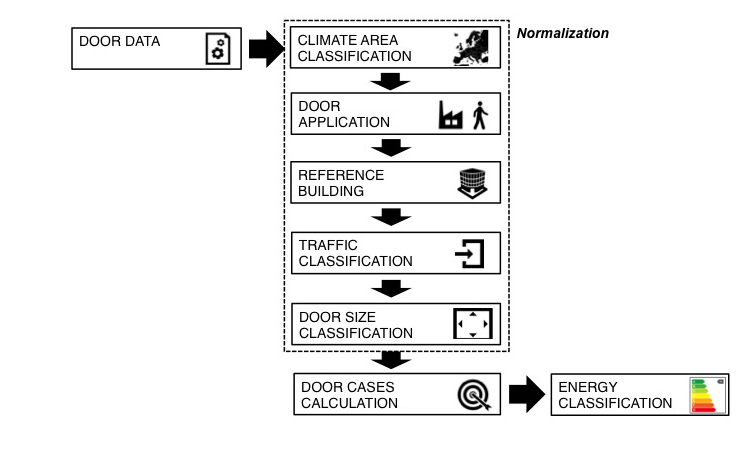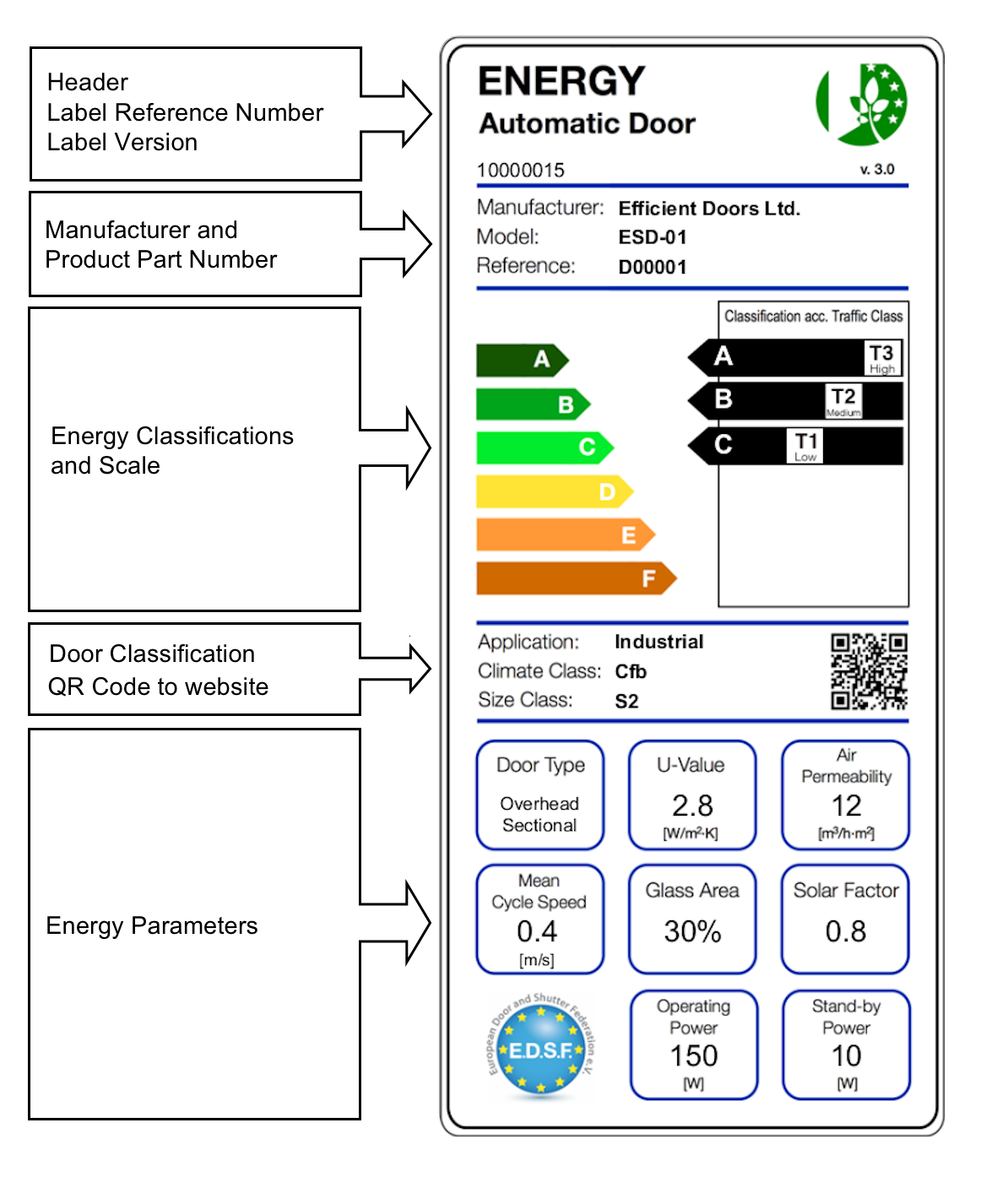The Label
Which products do we label?
 Energy labels are intended for automatic doors for use in both the industrial sector and the services sector, providing access for vehicules, goods and persons. They are also intended for automatic garage doors for residential use.
Energy labels are intended for automatic doors for use in both the industrial sector and the services sector, providing access for vehicules, goods and persons. They are also intended for automatic garage doors for residential use.- each individual door to be installed.
- a group or range of products, provided that it is clearly identified by model or reference and that all the values that appear on the label are the same throughout the range.
What information is found on the label?
Label Tag Number: as a reference, assigned by E.D.S.F.
Manufacturer Information: Name of the company or brand, door model, product reference
Energy Classification: A, B, C, D, E or F. The classification is made for three different Traffic Classes:
- T1, Low number of cycles per year
- T2, Medium number of cycles per year
- T3, High number of cycles per year
Door Classification Data: We use these factors to categorise doors so they are comparable with each other, that is "standardised" or “normalized”. This means that we can only make comparisons between doors having the same Door Classification Data.
Application Class: Whether it is an industrial, pedestrian or residential garage door.
Climate Class: The climate of the area where the door will be installed, according to the Köppen-Geiger classification.
Size Class: Depending on the size of the door, products are grouped into different classes.
Door Type: The type of door from a construction and functional point of view.
Thermal Transmittance: It shows us the level of thermal insulation of the door when closed.
Air Permeability: It shows us the level of leak-tightness of the door when it is closed.
Mean Cycle Speed: It is directly related to losses by infiltration when the door is open, on determining the time the door is open in each cycle. More info.
Glass Area: It is the glass area in percentage with respect to the total area of the door.
Solar Factor: It is the relative amount of the total solar radiant heat energy entering the building through the glass
Operating Power: It determines the electrical consumption of the door during opening and closing.
Stand-By Power: It determines the electrical consumption of the door at rest.
How is the classification made?
 This figure explains the classification methodology in summary form. The data for each particular door are set out in comparable terms,
producing the Door Classification Data that define the normalized door. At the same time, the system inserts for reference the best and worst examples in accordance with the
current state of the industry, again in a standardised form.
This figure explains the classification methodology in summary form. The data for each particular door are set out in comparable terms,
producing the Door Classification Data that define the normalized door. At the same time, the system inserts for reference the best and worst examples in accordance with the
current state of the industry, again in a standardised form.
Depending on the gap to the worst (or best) case, the A, B, C... classification is established:

 In detail the process is followed as in the diagram. Logically, the information entered by the manufacturer for the
classification is its own responsibility and must be truthful and in accordance with the contents of the Declaration of Performance (DoP) of
the product.
In detail the process is followed as in the diagram. Logically, the information entered by the manufacturer for the
classification is its own responsibility and must be truthful and in accordance with the contents of the Declaration of Performance (DoP) of
the product.
E.D.S.F. certifies through the application that the classification has
been calculated in accordance with the established methodology approved
by the association.
For more information, here in the download area you find a
technical paper with a detailed description of the classification calculation.
In the F.A.Q. area more practical information about calculation can be found.

